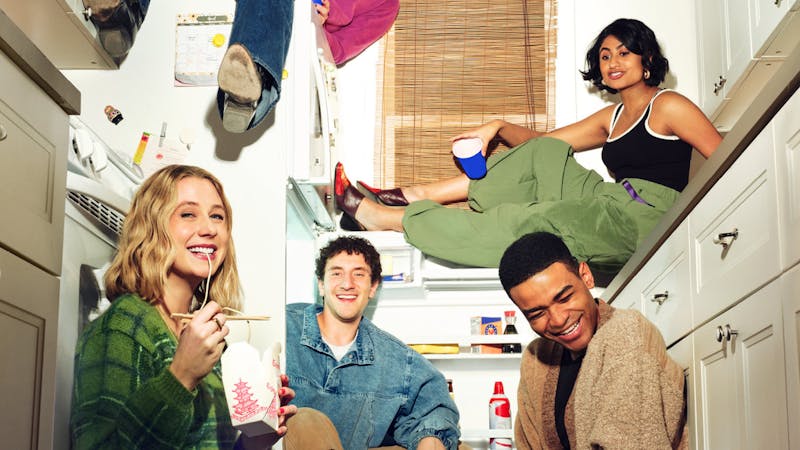Altered Origins architecture festival breaks boundaries

A one-of-a-kind festival was hosted by Rice’s School of Architecture Oct. 22 to 26, in collaboration with the department of anthropology, Houston Climate Justice Museum and Moody Center for the Arts. The festival, titled “Altered Origins: Emergencies, Experiments and Environment,” included workshops, conversations and performances challenging the norms of architecture.
“We were pushing for work that was transdisciplinary, that works in the outskirts or limits of the disciplines,” said Tania Tovar Torres, the festival’s organizer and a School of Architecture Wortham Fellow.
The transdisciplinary nature of the festival was reflected in its geographies, Tovar Torres said. Workshops, conversations and performances were held across campus: from Cannady Hall’s fabrication workshop to the archaeology lab in Sewell’s basement and the Moody Center for the Arts.
The festival featured 14 presenters, who Tovar Torres met through her curatorial work in Mexico City. These guests hosted workshops and gave lectures on various topics throughout the event.
“I would call them all spatial practitioners because they all work in a very spatial manner but on different scales — from the body to the territory or the objects in between,” Tovar Torres said. “Some were trained as artists, sound artists, performance artists or anthropologists.”
Like the participants themselves, programming was varied, with topics ranging from collaborative 3D scanning of artifacts to a workshop where participants explored “the continuity between our bones and the rocks that compose the foundations of the earth,” according to the festival’s website.
Alice Bian, a senior architecture student at Brown College, said the “Digital Clay” workshop she attended had an intimate and experimental atmosphere. The workshop used 3D printers to create clay models.
“It was a one-to-one learning experience and everyone was very comfortable,” Bian said. “3D printing is a high-tech method using clay, but using the machine to print was very manual.”
The decision to call it a festival was deliberate, said Torres.
“[Symposium or conference] felt so static and a bit too trapped in the academic setting,” Tovar Torres said. “We wanted to create something that was open to everyone and that had a kind of joyful and festive condition to it.”
The festival was unique, according to Bian.
“The whole workshop idea was a pioneering experience,” Bian said. “It was built around creating a hands-on learning experience, instead of just listening to a lecturer and asking some questions, which is something that we get a lot of at the architecture school.”
The festival was the culmination of a Watkins seminar sequence that Tovar Torres led in the 2023-24 academic year. The Watkin sequence begins with a special topics seminar where fourth-year architecture students develop research projects on contemporary challenges. Their investigative work is then developed and finalized in a spring studio.
The Watkins sequence that Tovar Torres taught last year was also titled Altered Origins.
“Students started by researching and interviewing practitioners in Mexico who were working at the intersection of architecture, the humanities, the sciences and the arts,” Tovar Torres said.
Tovar Torres said she was motivated by a desire to show students how tools and methodologies from other fields could be incorporated into architectural practice.
“Our students are very versed in digital production and model making, and I wanted to show them how those skills can also be applied in different contexts and to answer different questions,” Tovar Torres said.
For Neha Nayar, a fifth-year architecture student, the “Altered Origins” Watkins sequence was unlike any other architecture seminar or studio.
“It was super detached from the typical design process, instead encouraging us to look for unconventional, designable ‘spaces’ beyond obvious forms of architecture,” Nayar said. “It was also a great opportunity for creative expression outside the architectural discipline.”
Tovar Torres said she hoped that festival participants would expand their horizons on what architecture and architectural research could look like.
“There are so many different avenues in which one can practice, and architecture is so much more than just design and edification,” Tovar Torres said.
More from The Rice Thresher

Andrew Thomas Huang puts visuals and identity to song
Houston is welcoming the Grammy-nominated figure behind the music videos of Björk and FKA twigs on June 27.

Live it up this summer with these Houston shows
Staying in Houston this summer and wondering how to make the most of your time? Fortunately, you're in luck, there's no shortage of amazing shows and performances happening around the city. From live music to ballet and everything in between, here are some events coming up this month and next!

Review: 'Adults' couldn’t have matured better
Sitcoms are back, and they’re actually funny. FX’s “Adults” is an original comedy following a friend group navigating New York and what it means to be an “actual adult.” From ever-mounting medical bills to chaotic dinner parties, the group attempts to tackle this new stage of life together, only to be met with varying levels of success.

Please note All comments are eligible for publication by The Rice Thresher.